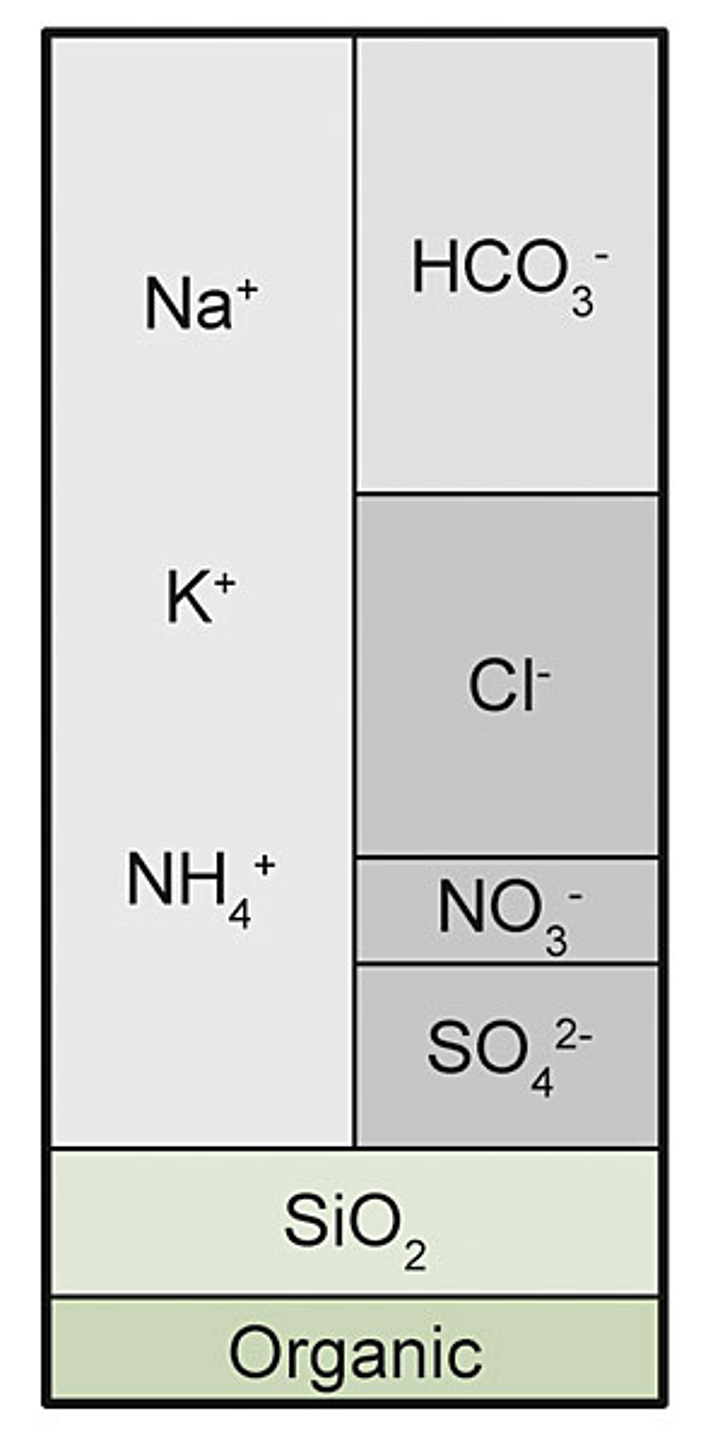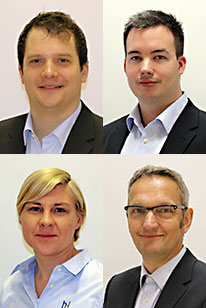Ion exchange
The concentration of alkaline earths calcium, magnesium, strontium and barium dissolved in water is designated as the water hardness. Strontium and barium play a subordinate and negligible role. The earth alkalis calcium and magnesium are grouped together as hardeners.
With ion-exchange softening, the calcium and magnesium ions are exchanged for sodium ions (Graphic water matrix after Softening). For this purpose, the water is passed over a strongly acidic cation exchanger loaded with sodium ions.
Regeneration occurs with a common salt solution of an elevated concentration. The total salt content remains unchanged with this process.
Water softening systems that operate according to the ion exchange principle are used in particular in the industrial sector for process water treatment or for decentralised softening of drinking water in single-family and multi-family houses.
Centralised softening of drinking water
In centralised softening of drinking water processes such as rapid decarbonisation or nanofiltration / reverse osmosis are used. The choice of process depends on the water matrix, the desired initial and target hardness as well as the amount of water to be softened.


